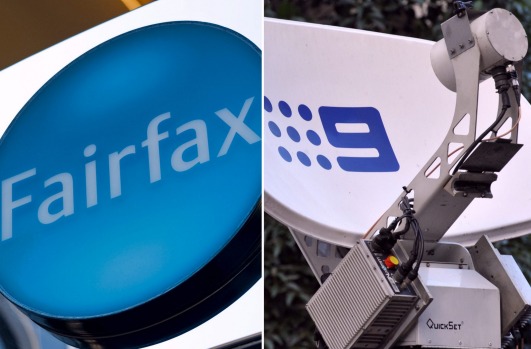
The merged Nine Entertainment and Fairfax Media will find $50 million of annual savings in technology, product, media sales and back office costs, and by sharing lifestyle content, but has again vowed that none of the cuts will come from journalism jobs or combining newsrooms.
About $45 million in savings, in tranches of $15 million each, will come out of the technology and product divisions, for example by using and developing common tech platforms, the media sales teams and commercial operations divisions, and corporate and support functions, which include roles such as management, audit, head office, human resources, marketing, property services and ASX compliance.
A further $5 million will come from the sharing of “lifestyle-oriented” content used by different but similar brands run separately across the combined Nine and Fairfax. This would mean similar brands such as Daily Life and Honey would continue to exist with their own editorial teams, but the back office and others costs of running them above editorial could be combined.
“None of the cost synergies expected to be realised depend on the consolidation of Nine’s and Fairfax’s newsrooms or reducing the number of journalists employed in the newsrooms,” the scheme booklet, released on Friday evening to the Australian Securities Exchange, states.
The synergies are expected to be achieved within two years of completion of the merger, which independent advisory firm Grant Samuel & Associates, which reviewed the scheme, backed as in the best interests of Fairfax shareholders.
The documents further reiterate this point when outlining the future for employees of the combined Nine and Fairfax. Nine will try to find new jobs for those employees found to be in roles where there is “duplication” but conceded it will not be possible for all.
“In circumstances where duplication of employee roles is identified, the present intention of Nine, where practicable and possible to do so, is to seek to allocate alternative responsibilities to those affected employees within the Combined Group.
“However, it will not be possible for Nine to offer suitable alternative roles in all instances. Where affected employees are unable to be allocated alternative responsibilities, those employees will receive payments and other benefits to which they are entitled on departure under their terms of employment. There are no current plans to consolidate the newsrooms of Nine and Fairfax.”
The documents also note opportunities for further benefits from the greater offering for advertisers, potential to promote Domain and the simplified ownership of subscription video on-demand service Stan. However, Nine and Fairfax did not put a cash number on potential upside.
Upon completion of the deal, Nine will review all the assets across the portfolio. Fairfax’s New Zealand business and Australian regional publishing are believed to be the first divisions which could potentially be offloaded, as revealed by The Australian Financial Review. The future of Fairfax’s events business is also believed to be under the microscope.
The scheme documents again noted Nine’s commitment to Fairfax’s Charter of Editorial Independence.
“Fairfax’s Charter of Editorial Independence, which establishes conditions for producing news and journalistic content, with a view to enshrining editorial independence, has been unanimously endorsed by the Nine Board,” it said.
“Consistent with Nine’s strategy to “create great content, distribute it broadly, and engage audiences and advertisers”, it is intended that the combined group will continue to produce content under Fairfax owned brands which will appeal to audiences who may be different to the audiences who currently engage with Nine’s content.”
The booklet said Nine will use its existing platforms to promote Fairfax content to find new audiences, growing consumers across the group and improving the advertising appeal.
Prior to the documents being released on Friday, Nine and Fairfax shares collapsed after trading updates revealed weaker-than-expected numbers for real estate classifieds and services business Domain. Investors heavily sold off all three stocks, with Nine dropping 12.4 per cent to $1.84, Fairfax falling 13.6 per cent to 67¢ and Domain collapsing 13.4 per cent to $2.77.
House prices have been falling across the country, but especially so in Sydney and Melbourne. This has weighed on the number of auctions and on auction clearance rates.


